As an avid horticulturist will know, there are thousands of different varieties of trees in the world trees that start with E.
They all grow in various shapes, sizes, and colors, making them infinitely interesting to learn more about.
In our alphabet-based tree series, we’re going through every initial to cover as many trees as possible and hopefully, teach you about some new plants you’d never even heard of before!
In this list, we’re taking a look at all the trees that start with the letter E.
1. Ebony
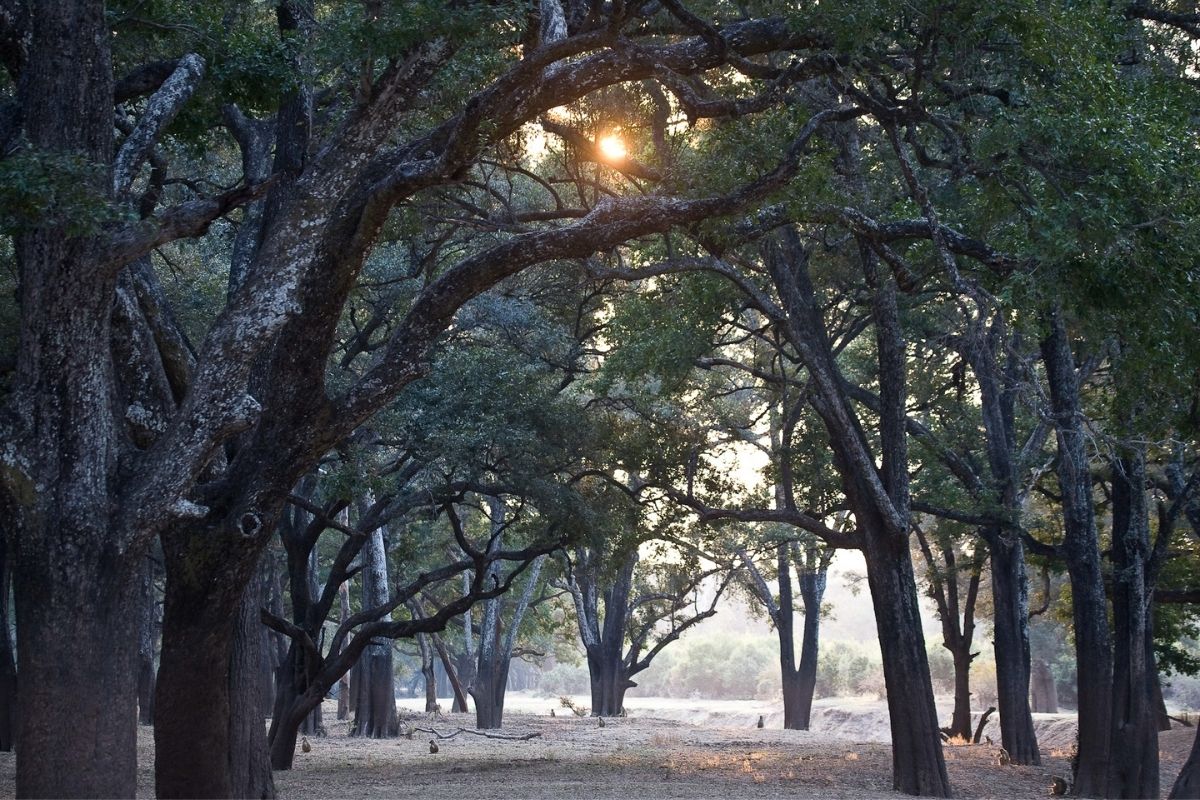
We’re starting things off with ebony, which is technically the name for the wood produced commonly by several different species in the Diospyros genus.
We thought it was still worth including, thanks to its exceptionally unique wood properties.
The center of the trunk is an incredibly dark black color and is so dense that it will sink in water.
The wood is commonly used for ornamental purposes like constructing high-quality furniture and even piano keys.
2. Elderberry Tree
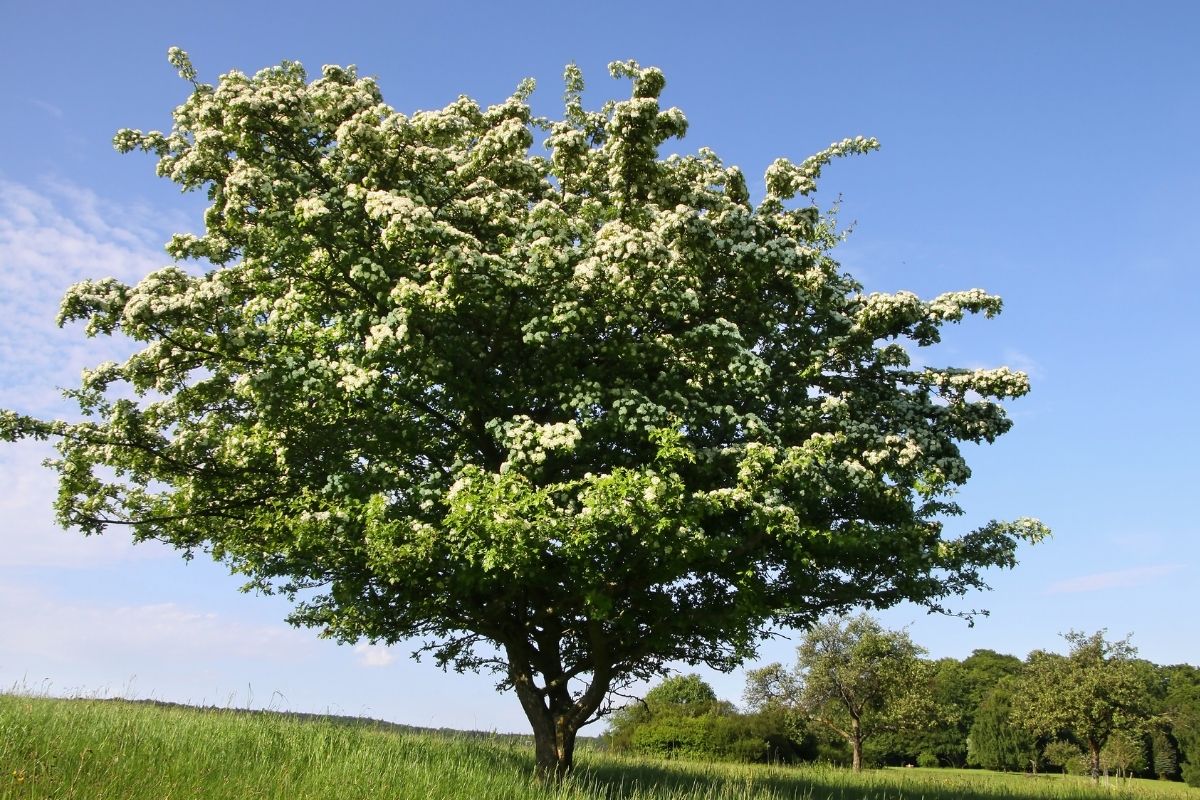
As you’ve probably already guessed, the elderberry tree gets its name from the fruits that grow prosperously on its branches.
Its official name is a Sambucus and it can be found growing all over the United States and even through Central America.
As well as growing the small black elderberries, this tree also produces some elegant white flowers all over its branches which makes for a pleasant aesthetic.
3. Elm
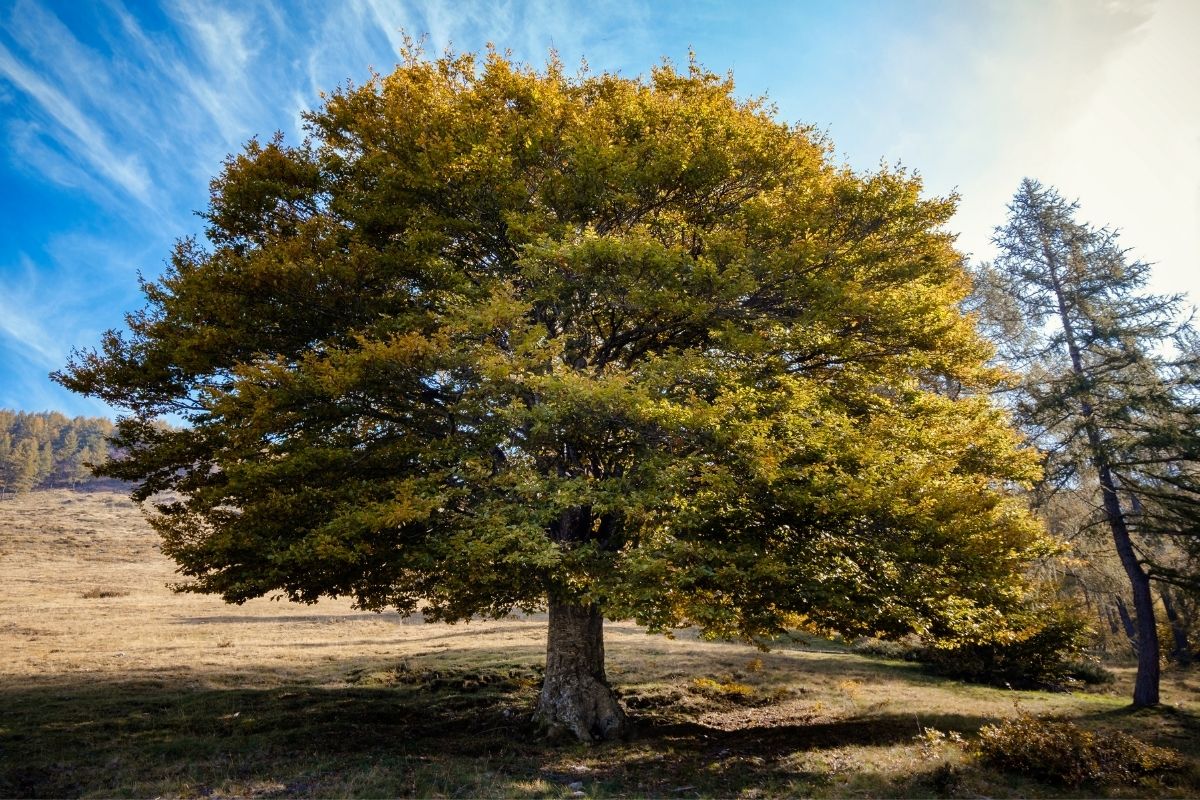
This rather well-known species of tree can be deciduous or semi-deciduous and is part of the Ulmaceae plant family.
The genus is thought to be around 20 million years old and originated in Asia. However, the tree now grows in tropical-montane regions of North America and all over the Middle East.
They can often be ravaged by the Dutch elm disease, which has provided some significant issues for the elm population in the last couple of centuries.
However, efforts have been made to repopulate these trees and, as a result, you can now see them frequently growing in public parks and backyards.
RELATED: Top 10 Types of Elm Trees| Elm Tree Uses, Pictures and Identification Guide
4. Eucalyptus
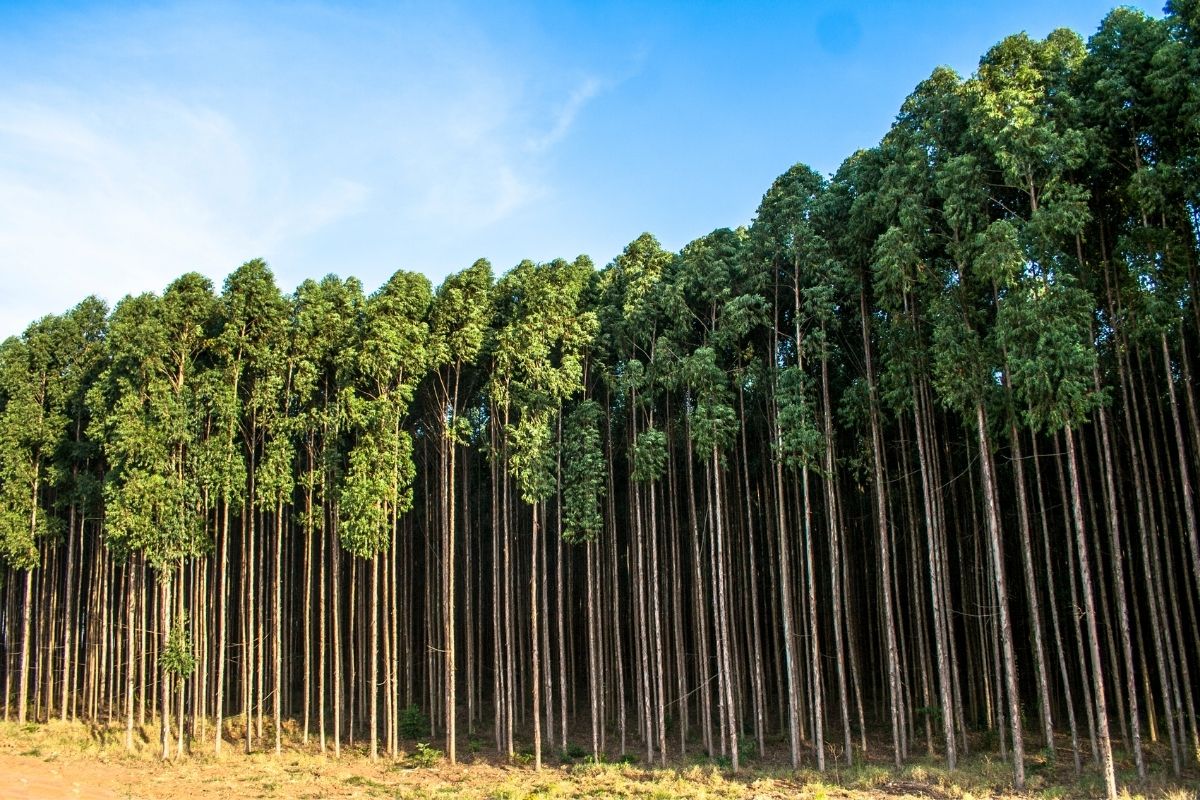
The eucalyptus tree is native to Southern Australia and produces four different subspecies that can be observed growing all across the region.
These subspecies are Victorian blue gum, Tasmanian blue gum, Maiden’s gum, and Victorian eurabbie.
The trees will often grow to around 148ft at full height but can eventually grow to twice that size under the right conditions.
You may have heard of the eucalyptus essential oil, a key ingredient that is produced by this tree but its leaves are also made useful for producing a form of herbal tea.
5. Euodia

The euodia hupehensis, more commonly known as the bee tree, is a fairly small genus that will often only grow to a height of around 55ft at full maturity.
It’s a great plant for collectors as the tree produces some wonderful white flowers and bright red fruits on female trees through autumn.
As its common name might suggest, these bright colors are great for attracting bees to the tree and boosting the rates of pollination in any home backyard.
6. Everglades Palm
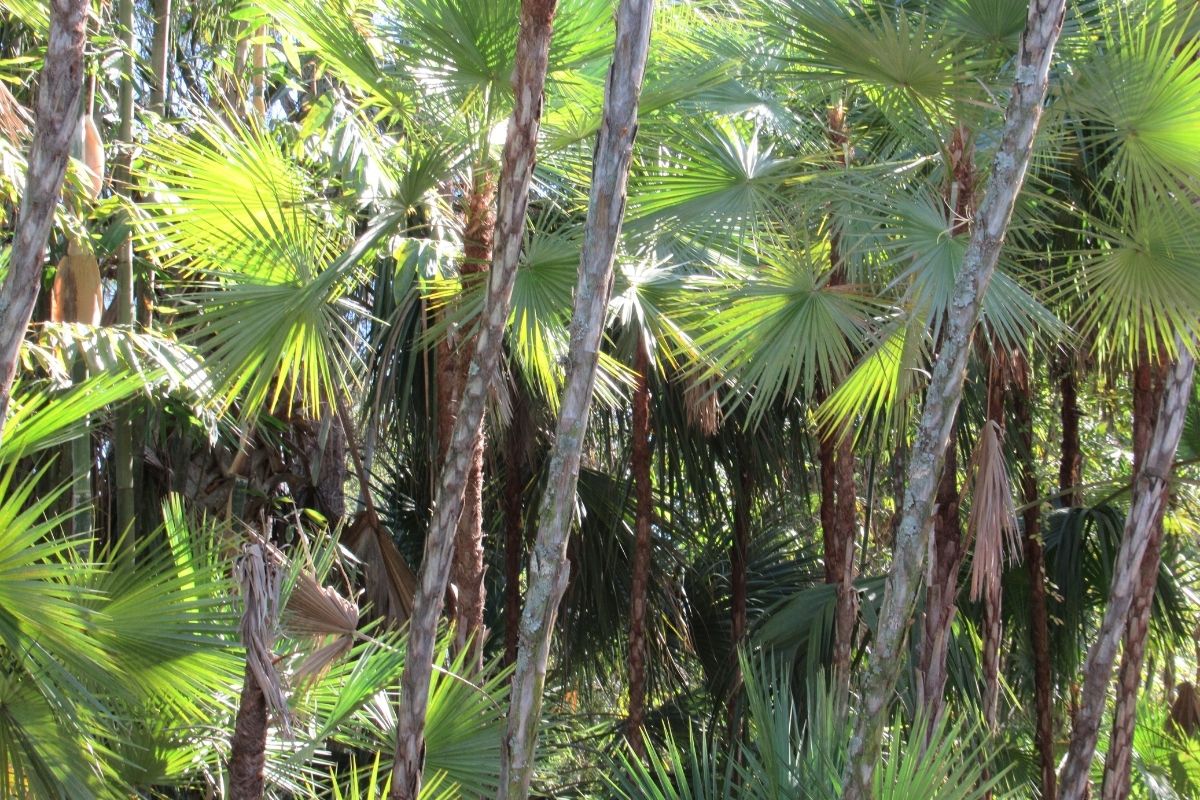
This particular tree is native mainly to Central America, the Caribbean, the Bahamas, and even some parts of Southern Florida.
In Spanish-speaking countries, it is known as cubas, tique, or papta.
It certainly has a very tropical appearance, with large, fanned-out leaves culminating in large masses at the tops of long, thin trunks.
It is known to grow small orange or blackberries on its branches and can reach a height of 23ft at full maturity, meaning it is much shorter than most other palm trees.
7. Eastern Cottonwood
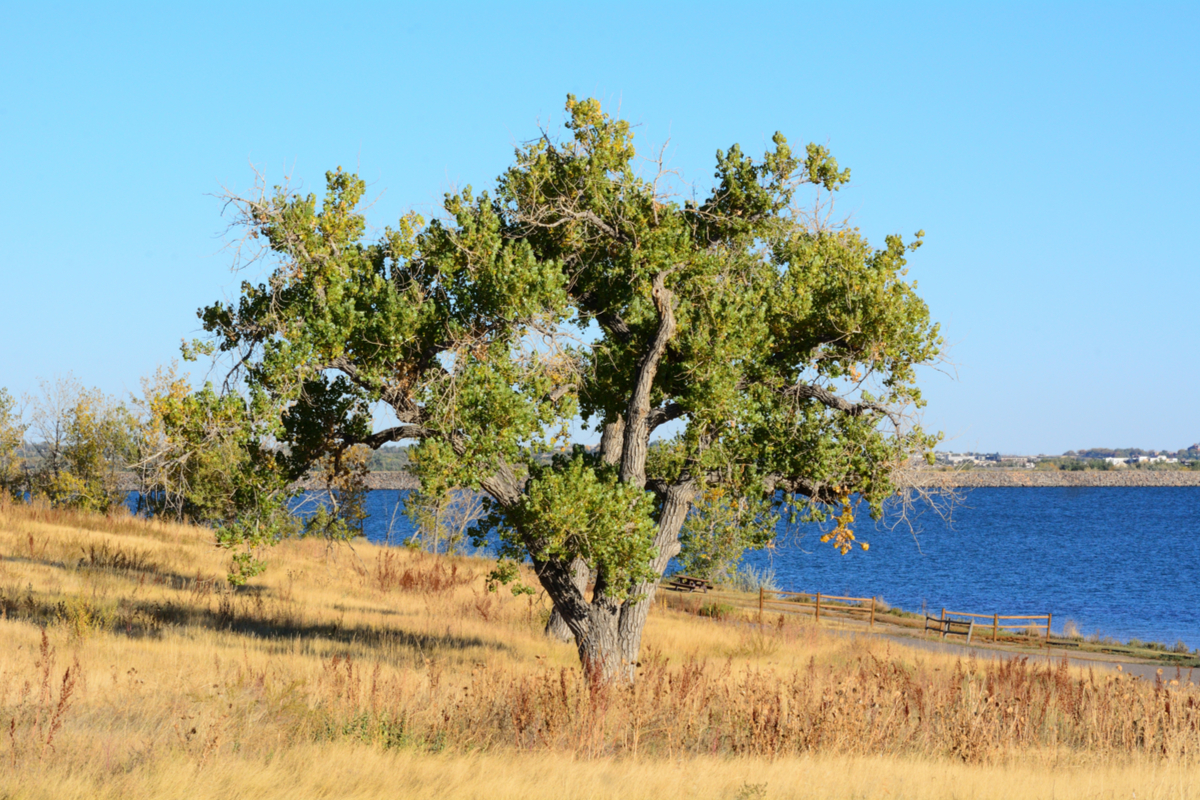
If you live in the United States, there’s a good chance you may have seen this tree before, without even realizing it.
It is native to North America and can even be seen growing as far south as Northern Mexico.
It can grow to a great height of 195ft in good conditions and is actually one of the largest North American hardwood trees in existence.
It has a silver/white colored bark which gives it a charmingly unique appearance, though its color shifts gradually to a darker gray as it ages.
8. Eastern Hemlock
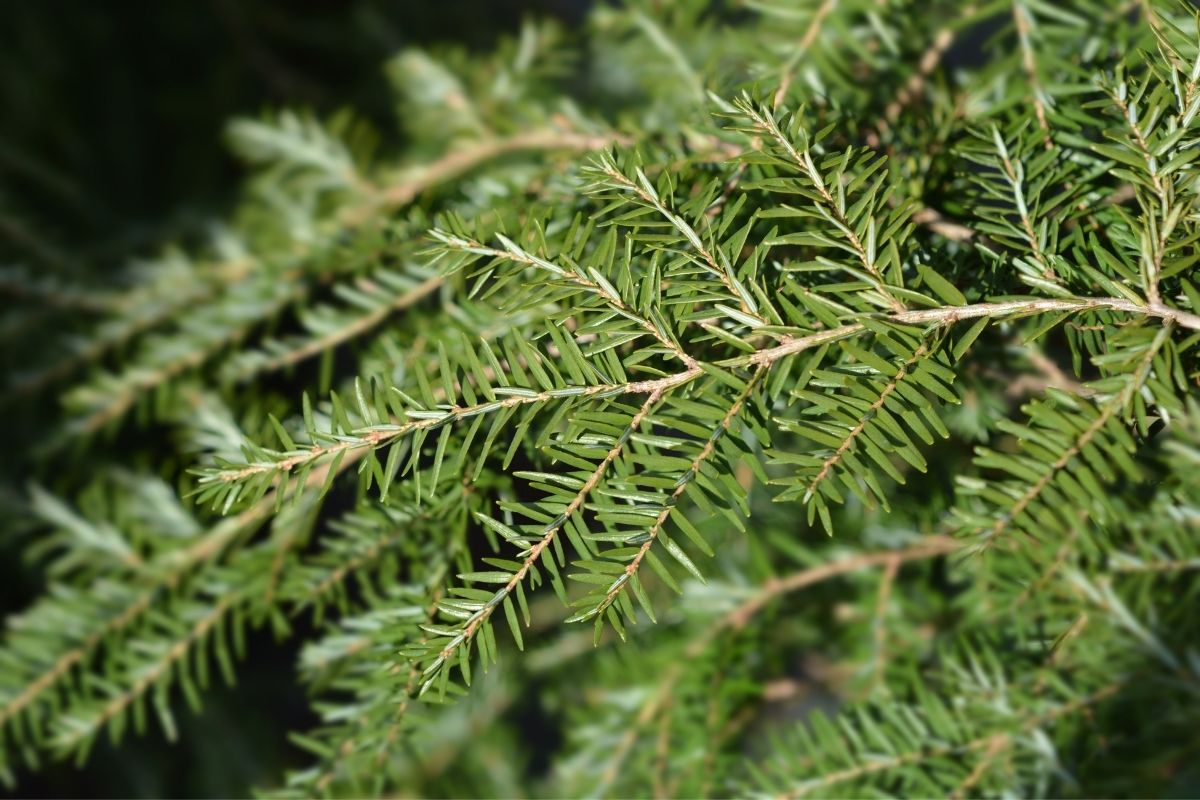
The Eastern hemlock tree, or ‘tsuga canadensis’, is native mainly to Canada but will also be seen growing naturally in the Northern parts of the United States.
Interestingly, they have also been recently introduced to the UK, thanks to their large and visually appealing aesthetic.
Indeed, they can grow to full heights of over 100ft and will produce sparsely populated branches that allow plenty of sunlight to reach the forest floor.
9. Eastern White Pine
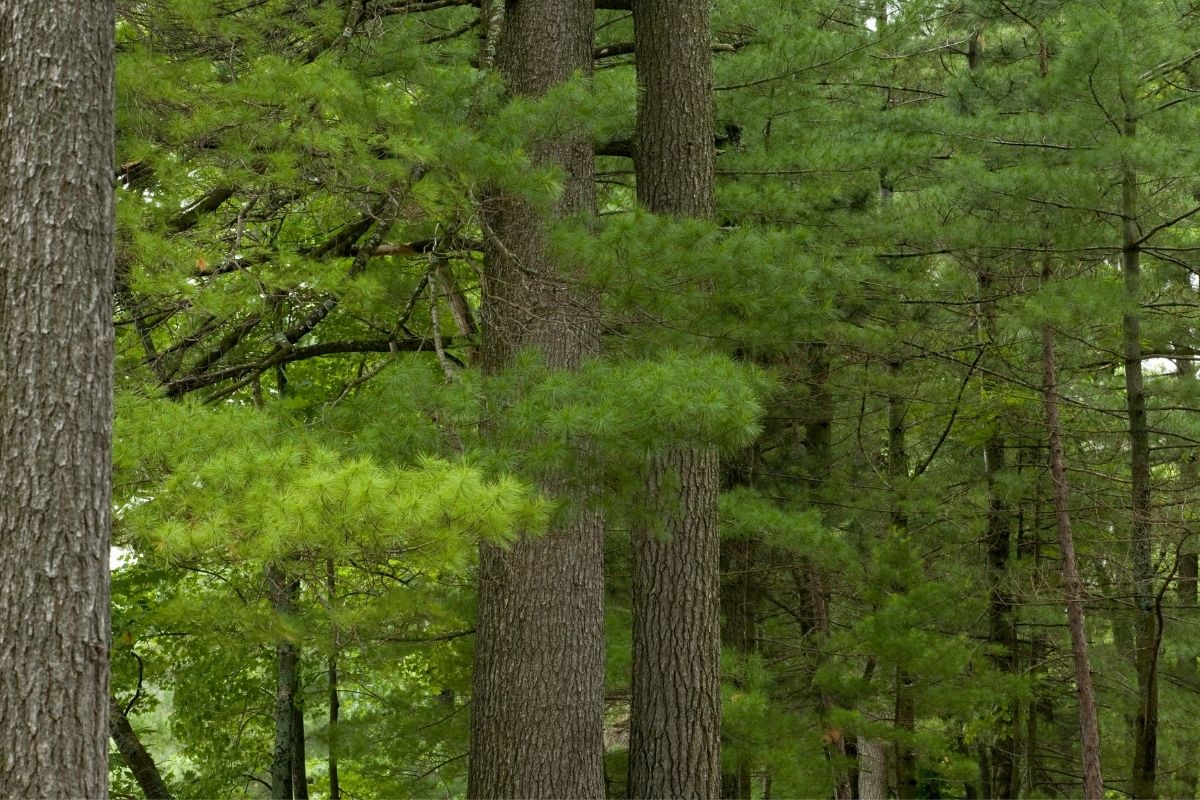
Pinus strobus is the official name for this tree but it is known by several others, including Northern white pine, Weymouth pine, and soft pine.
It is native to Eastern North America and grows naturally across parts of Canada too.
A member of the British Royal Navy is thought to have brought seeds back to the United Kingdom with him and planted them in England, where the tree now grows somewhat infrequently.
In fact, that man’s name, George Weymouth, is where the British name, ‘Weymouth pine’, originates from.
10. Eastern Fir

This Canadian-native fir tree often grows to around 65ft at full height and sports some distinctively conical dark green leaves.
Interestingly, this tree is also used for a variety of medicinal purposes, being employed mainly by Native Americans to treat bacterial and viral infections
The needles on the tree are consumed for this purpose and will actually digest quite easily in the stomachs of humans and most animals.
11. English Oak
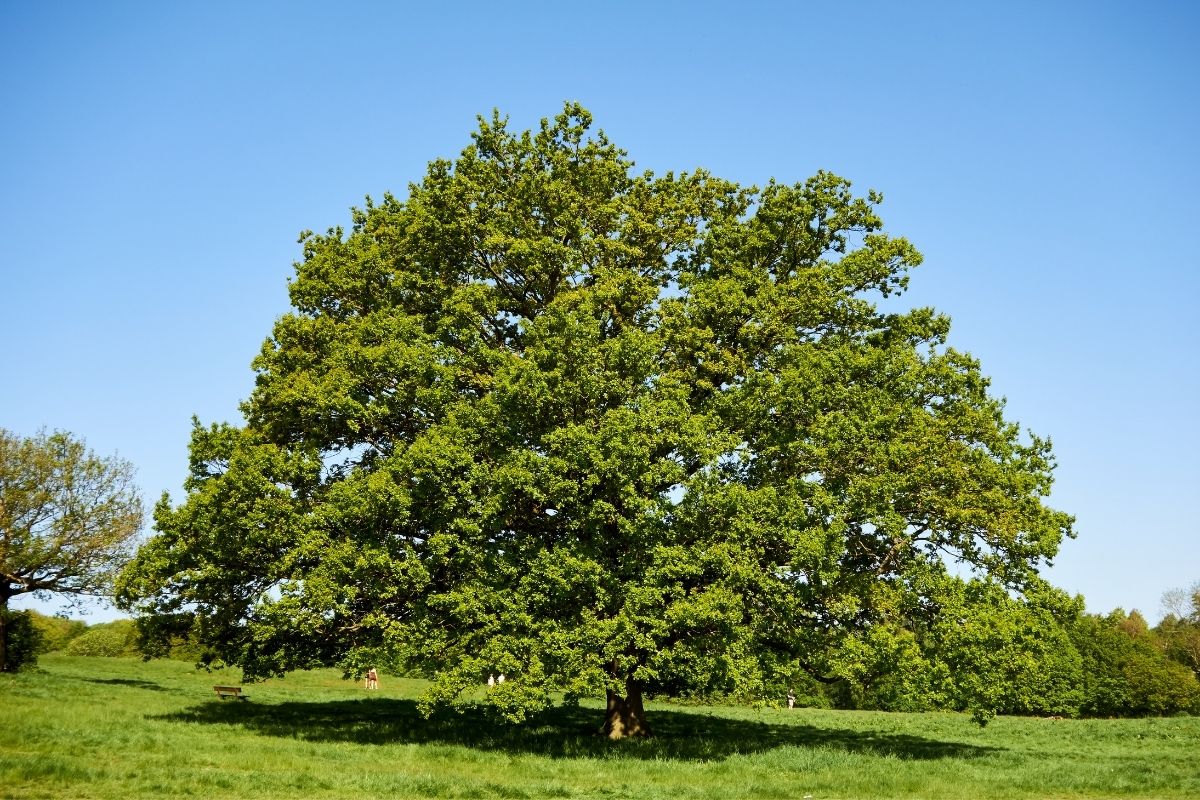
Sometimes referred to as a common oak or European oak, this tree can be seen growing in most regions of Europe, where it is native.
However, the tree has now been cultivated in North America and parts of China where it can be seen growing in forests.
The characteristic acorns that grow on this tree hold some significant symbolic value to a lot of European cultures, including in Croatia where it is depicted on the 5 lipa coin.
It is known to be the thickest tree that grows in the UK and produces large masses of bushy leaves all over its branches.
12. European Larch
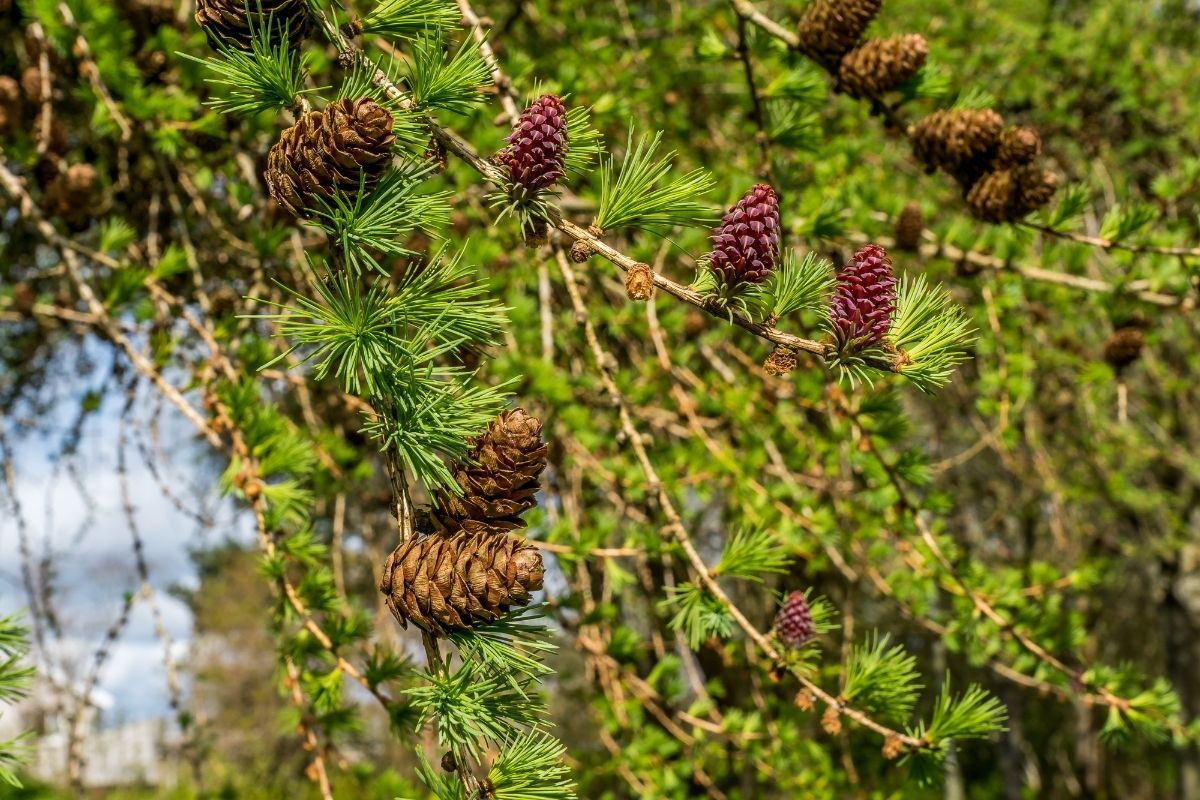
Also known as larix decidua, this tree is a hardy plant that can withstand some pretty brutal growing conditions.
It is most commonly seen growing in the mountainous regions of Central Europe, surrounded by snow and at some fairly high altitudes.
Amazingly, the tree is believed to have a lifespan of around 1000 years, with some claiming that they can live for up to 2000 years!
The wood of this tree is flexible and durable, which lends it well to being used for constructing boats and yachts.
13. Emory Oak
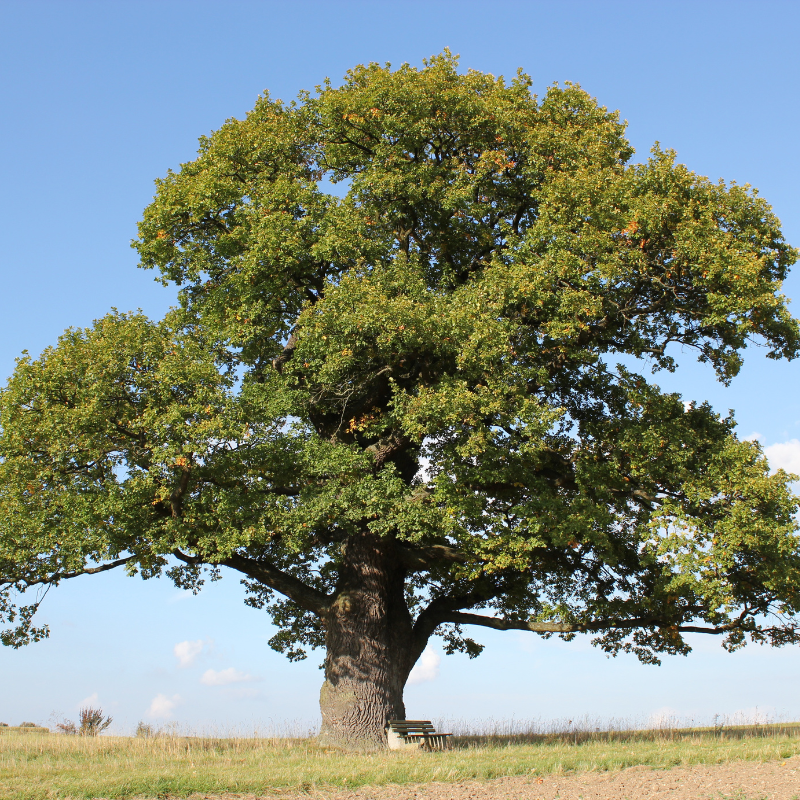
This species of oak grows predominantly in Arizona in the United States but can also be seen growing in other parts of the country, as well as Northern Mexico.
It is a part of the red oak group which retains its leaves during the winter until new ones form in the spring.
Due to its size, some consider this to be a shrub, as it only grows to around 16-55ft at full maturity.
However, this tree has some great significance to the wildlife of the areas in which it grows, as they can often be seen snacking on its acorns.
14. Engelmann Spruce

Growing mainly in the Western regions of North America, including Hawaii, the engelmann spruce is mainly harvested for its paper-making and general construction wood-making properties.
In fact, its wood is also used for constructing musical instruments such as guitars, violins, and pianos.
The tree grows in a very tall, thin structure with branches staying fairly short.
They tend to grow very well in wet or cold habitats, suiting them well to the climates of North America.
15. European Speckled Alder
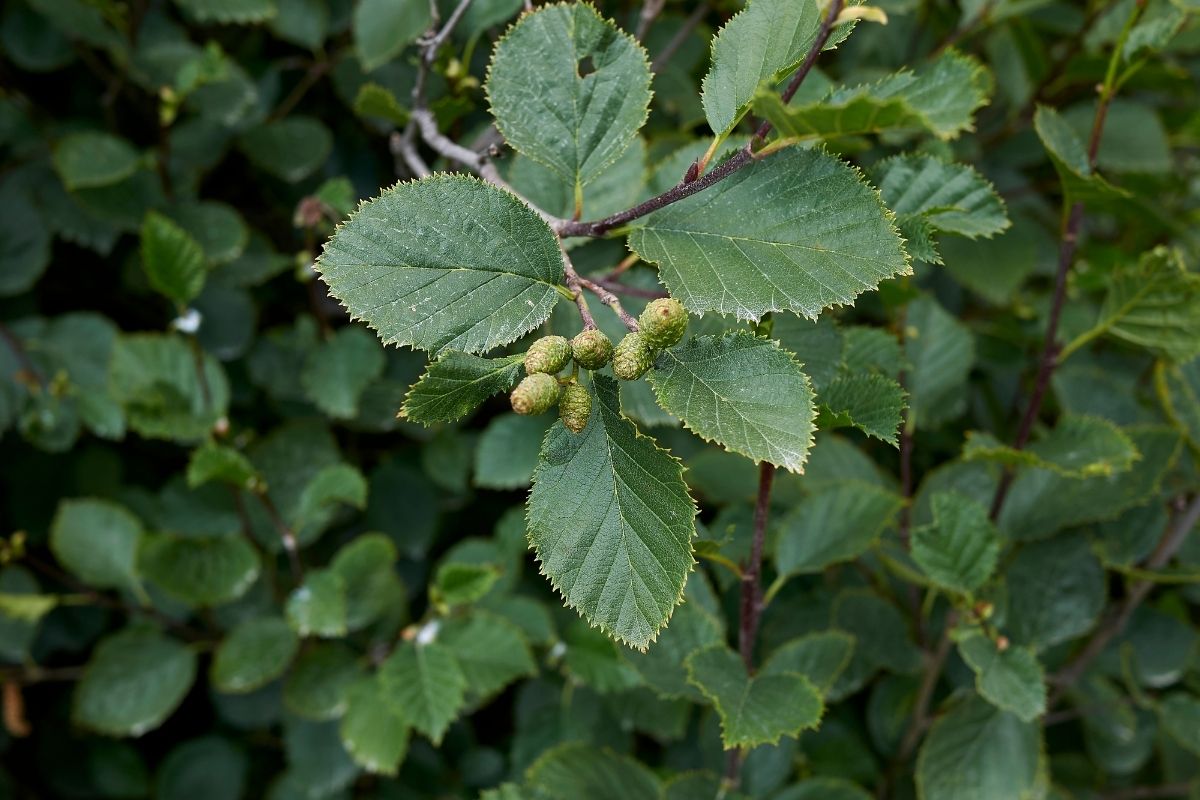
As we near the end of our list, we come to a tree known as alnus incana or European speckled alder.
It’s a medium-sized tree that grows in cool regions, mainly in the Northern hemisphere.
A variety of subspecies of this tree can be observed growing in the different continents it grows in, ranging from North America to Asia.
The tree is mainly cultivated in public parks and home gardens for its aesthetic qualities.
RELATED: Ripe And Radiant: 24 Different Types Of European Trees
16. Enebro
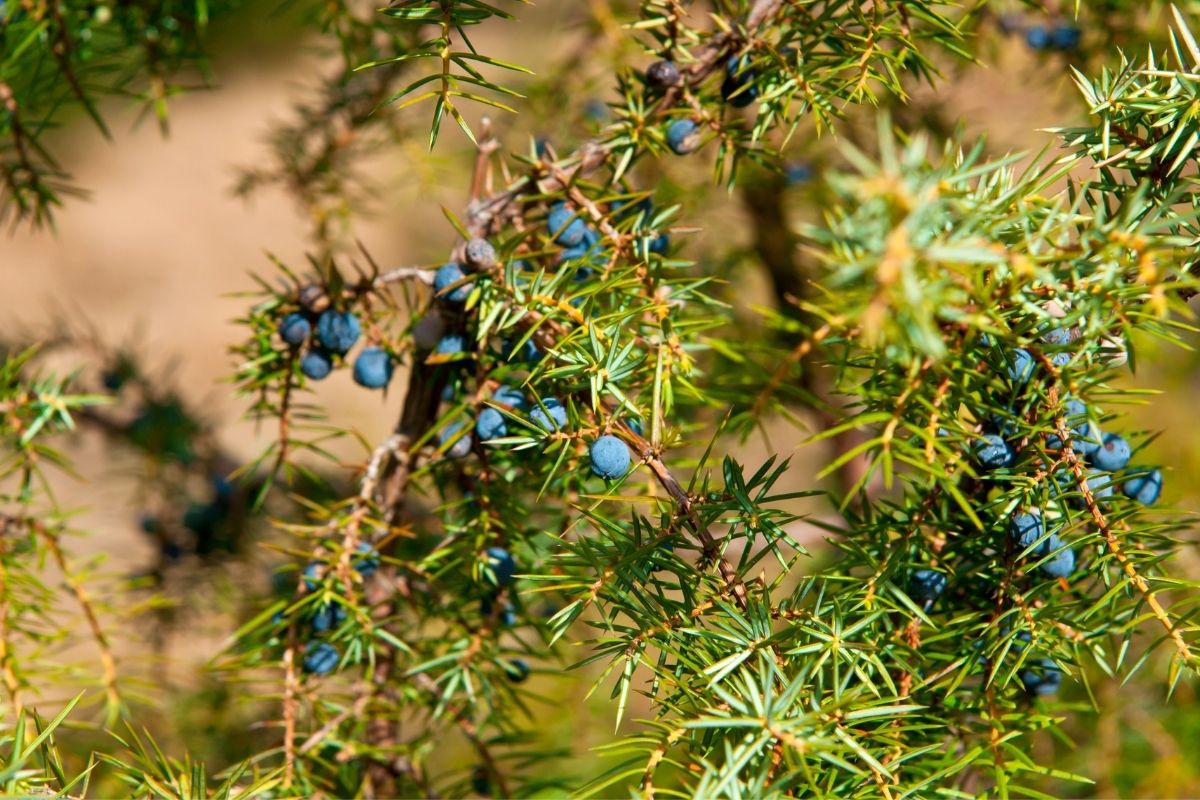
The final tree we’re looking at for this list is another North American native.
It grows dark green needle-shaped leaves that bear a small, blueberry.
It has some great benefits for the wildlife that live around where the tree grows, providing plenty of shade with thick foliage and erosion control, protecting nearby trees.
For that reason, it also makes a great material to use for outdoor furniture and fences, thanks to its rot-resistant qualities.
Final Thoughts
Those are just some of the trees in the world that begin with the letter E but there are plenty more out there that we simply didn’t have space to include.
What’s particularly interesting about all these trees is how far and wide they can be spread across the globe, whether by natural or man-made intervention.
If you want to learn more about some new varieties of trees, check out our other lists in the alphabet series!
Editor’s Recommendations
Out Of The Blue: 12 Different Types Of Blue Trees







